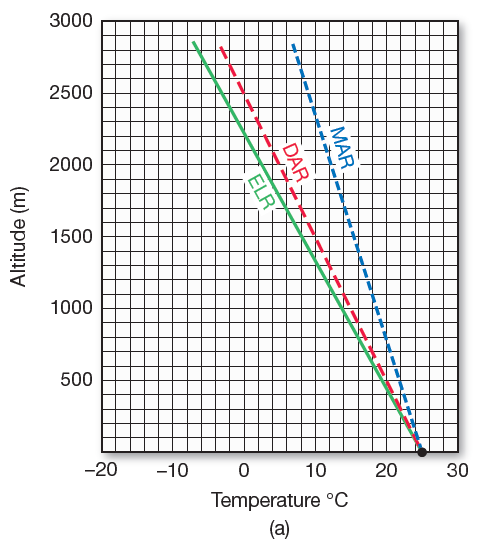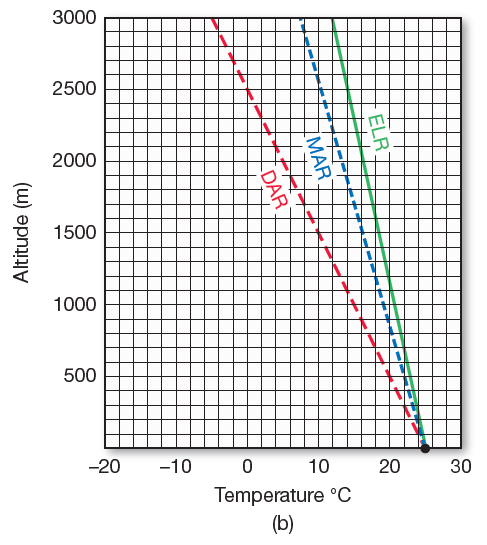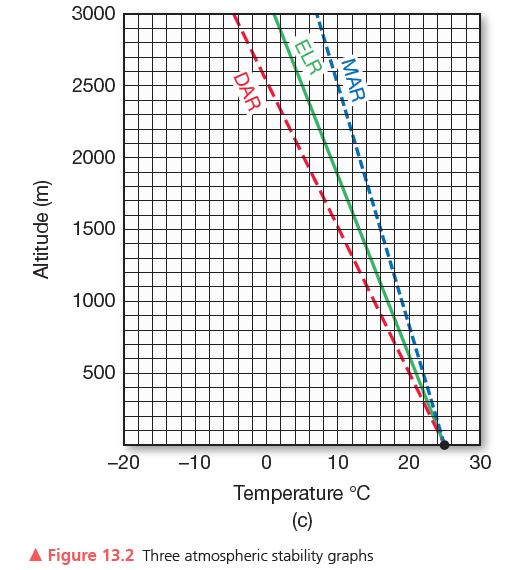Describe the general relationship between the ELR and atmospheric stability. For which ELR values will the atmosphere always be stable? Unstable?
On the graphs provided in Figure 13.2, plot the following data, using colored pencils to distinguish the different rates. Begin with a surface temperature of 25°C noted on all three graphs labeled a, b, and c. Please use these colors: ELR = green pencil; DAR = red pencil; MAR = blue pencil.
a) Plot an environmental lapse rate of 11 C° per 1000 m, DAR of 10 C° per 1000 m, MAR of 6 C° per 1000 m. This graph is completed for you.
b) Plot an environmental lapse rate of 4.5 C° per 1000 m, DAR of 10 C° per 1000 m, MAR of 6 C° per 1000 m.
c) Plot an environmental lapse rate of 8 C° per 1000 m, DAR of 10 C° per 1000 m, MAR of 6 C° per 1000 m.



You might also like to view...
Many solvents expand to occupy greater volumes with increasing temperature. What happens to the concentration of a solution made with such a solvent as its temperature is increased?
A. Since it has a greater ability to dissolve more solute at a higher temperature, its concentration has increased. B. The concentration of a solution increases as the solute fits into the new spaces between the molecules. C. Since it has a greater ability to dissolve more solute at a higher temperature, its concentration has decreased. D. Since concentration depends on how much mass is dissolved in a given volume, as the volume increases, the concentration decreases.
In what way can structural control of floods actually increase flood damage?
A) by decreasing impervious cover in the urban environment B) by increasing runoff in the upper portions of drainage basins C) by encouraging development on the floodplain D) by making the water transmitting capacity of the stream less efficient
The Gobi Desert is noted for its widespread rice production
Indicate whether the statement is true or false
Which of the following affects the half-life of a radioactive sample?
A) the age of sample B) the size of the sample C) the temperature of the sample D) none of these